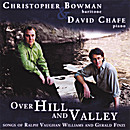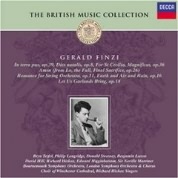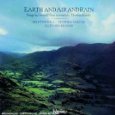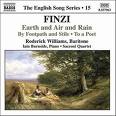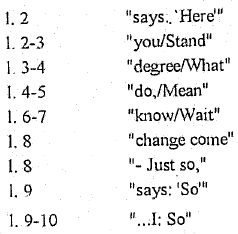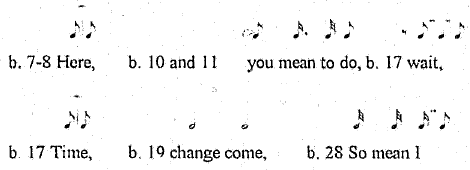Waiting Both
Poet: Thomas Hardy
Date of poem: undated
Publication date: 1926
Publisher:
Collection: Human Shows
History of Poem:
Poem
Waiting Both |
||
|---|---|---|
| 1 | A Star looks down at me, | |
| 2 | And says: 'Here I and you | |
| 3 | Stand, each in our degree: | |
| 4 | What do you mean to do, - | |
| 5 | Mean to do?' | |
| 6 | I say: 'For all I know, | |
| 7 | Wait, and let Time go by, | |
| 8 | Till my change come.' - 'Just so,' | |
| 9 | The star says: 'So mean I: - | |
| 10 | So mean I.' | |
(Hardy,701) |
||
Content/Meaning of the Poem:
Speaker:
Setting:
Purpose:
Idea or theme:
Style:
Form:
Synthesis:
Published comments about the poem:
✦✼✦✼✦✼✦✼✦✼✦✼✦✼✦✼✦✼✦✼✦✼✦✼✦✼✦✼✦✼✦✼✦✼✦
✦✼✦✼✦✼✦✼✦✼✦✼✦✼✦✼✦✼✦✼✦✼✦✼✦✼✦✼✦✼✦✼✦✼✦
Musical Analysis
Composition date:
Publication date:
Publisher: Boosey & Hawkes - Distributed by Hal Leonard Corporation
Tonality:
Transposition:
Duration:
Meter:
Tempo:
Form:
Rhythm:
Melody:
Texture:
Vocal Range:
Tessitura:
Dynamic Range:
Accompaniment:
Published comments about the music:
Pedagogical Considerations for Voice Students and Instructors:
✦✼✦✼✦✼✦✼✦✼✦✼✦✼✦✼✦✼✦✼✦✼✦✼✦✼✦✼✦✼✦✼✦✼✦
✦✼✦✼✦✼✦✼✦✼✦✼✦✼✦✼✦✼✦✼✦✼✦✼✦✼✦✼✦✼✦✼✦✼✦
| Pitch Analysis | ||||||
|---|---|---|---|---|---|---|
| pitch | stanza 1 |
stanza 2 |
stanza 3 |
stanza 4 |
total | |
highest |
A |
|||||
G |
||||||
F |
||||||
E |
||||||
D |
||||||
middle C |
||||||
B |
||||||
A |
||||||
G |
||||||
F |
||||||
lowest |
E |
|||||
| Rhythm Duration Analysis of Vocal Line | |||||
|---|---|---|---|---|---|
| stanza 1 | stanza 2 | stanza 3 | stanza 4 | total | |
16th note |
|||||
8th note |
|||||
dotted 8th |
|||||
quarter note |
|||||
dotted quarter |
|||||
triplet |
|||||
half note |
|||||
dotted half |
|||||
stanza total |
|||||
✦✼✦✼✦✼✦✼✦✼✦✼✦✼✦✼✦✼✦✼✦✼✦✼✦✼✦✼✦✼✦✼✦✼✦
Audio Recordings
Over Hill and Valley: Songs of Ralph Vaughan Williams and Gerald Finzi |
|
|
|
The British Music Collection: Gerald Finzi |
|
|
|
Song Recital |
|
|
|
Songs: Brahms - Faure - Finzi - Schubert |
|
|
|
The Songs of Gerald Finzi to Words by Thomas Hardy
|
|
|
|
A Treasury of English Song |
|
|
|
Gerald Finzi |
|
|
|
The English Song Series - 15 |
|
|
|
✦✼✦✼✦✼✦✼✦✼✦✼✦✼✦✼✦✼✦✼✦✼✦✼✦✼✦✼✦✼✦✼✦✼✦
The following is an analysis of Waiting Both by Gerhardus Daniël Van der Watt. Dr. Van der Watt extended permission to post this excerpt from his dissertation on October 8th, 2010. His dissertation dated November 1996, is entitled:
The Songs of Gerald Finzi (1901-1956) To Poems by Thomas Hardy
This excerpt comes from Volume II and begins on page 180 and concludes on page 188. To view the methodology used within Dr. Van der Watt's dissertation please refer to: Methodology - Van der Watt.
1. Poet
Specific background concerning poem:
This poem serves as the opening of the collection Human Shows (published 1926) and is undated. The biographer Martin Seymour-Smith says the following of the collection as a whole:
The least substantial of his single collections, it was more light-hearted in tone - as for the time being he was still determined to reject the charges of pessimism and gloom which were so often made against him. (Seymour-Smith, 860)
Hardy had a keen interest in the stars and astronomy which is evident from the setting of one of his novels, Two on a Tower, of which he says the following in the preface to the 1895 publication:
The slightly-built romance was the outcome of a wish to set the emotional history of two infinitesimal lives against the stupendous background of the stellar universe, and to impart to readers the sentiment of these contrasting magnitudes the smaller might be the greater to them as men. (Seymour-Smith, 286)
2. Poem
Waiting Both |
||
|---|---|---|
| 1 | A Star looks down at me, | a |
| 2 | And says: 'Here I and you | b |
| 3 | Stand, each in our degree: | a |
| 4 | What do you mean to do, - | b |
| 5 | Mean to do?' | b |
| 6 | I say: 'For all I know, | c |
| 7 | Wait, and let Time go by, | d |
| 8 | Till my change come.' - 'Just so,' | c |
| 9 | The star says: 'So mean I: - | d |
| 10 | So mean I.' | d |
(Hardy,701) |
||
The poem explores the "contrasting magnitudes" mentioned earlier of man and star but seeks to show the similarity in their respective states of being. The central phrases are "Waiting Both", suggesting a similarity in uncertain, incomplete destiny; "each in our degree", the degree being that of fixedness, loneliness, filled with potential, emitting light; and "till my change comes" which could be interpreted either positively (as an awakening) or negatively (as a death or burn-out) which the poet does not specify. This is a typical Hardian parallel between the condition of man and nature. Neither is in charge of his or its own destiny but both are essentially waiting to experience it.
The poem is written in the style of a lyrical miniature. The language and ideas are presented concisely, it is loaded with implication and has a certain metaphysical quality.
The poem consists f two echo-extended quatrains. The echo line at the end of each stanza (1, 5 and 10) has a very interesting effect. It is as if the persona and the star are communicating over such a distance that an echo results from their conversation. This echo reinforces the meaning of their conversation but at the same time ironically mocks their disposition.
A conversation takes place between a star and the persona in which the star initiates the contact in search for common ground with man, in their not dissimilar circumstances, what are their options or possibilities? The persona from his perspective answers insecurely (on man's behalf) that he is waiting indefinitely for the "change" (whatever that entails) - the star agrees. The underlying implication is that everything is waiting for the change, longing for that which is more permanent and certain as opposed to the uncertainty of the waiting. Paradoxically the poem also suggests a certain inevitability, even resignation: neither man nor the star is ultimately in command of his or its destiny.
Setting
1. Timbre
VOICE TYPE/RANGE
The song is set for baritone and the range is a perfect eleventh from the first C below middle C.
Piano accompaniment covers a range of five octaves which is a particularly significant aspect of this setting. The extreme of the treble range is used to refer to the "star" while references to man are associated with middle and lower range sonorities. It is interesting to note that where star and man agree about their destiny (b. 24-26), the opening material is re-presented with the variation that the star-sonority is found, though transposed in the treble clef while the man-sonority is heard in the extreme bass register in chromatic contrary motion with the former. There are no actual pedal indications but the terms sostenuto and molto legato and the extensive use of legato slurs indicate extensive yet sensitive use of the pedal.
Due to the overwhelmingly quiet nature of the song, few portamento accents occur. They are found in three places to accentuate very delicate internal metre change in bars 9, 10 and 11 which in turn suggests the uncertainty of the star and man's "degree". The final portamento enhanced by tenuto, is present on the second beat of bar 15. This indicates a slight hesitation before the start of stanza 2 as if man has to consider carefully before answering.
The atmosphere suggested by the piano part is quite sombre starting with a high-pitched star-motif and containing some slow-moving chromatic passages (b. 1-2, 16-17, 24-26). These contribute to a sense of strangeness and distance of being detached or forlorn or estranged. Warmer, more consonant chords accompany the reference to the common destiny between star and man. After the vocal climax (b. 19 on the word change), the piano reinforces or completes the "change" with an alteration in texture, dynamic level and key.
2. Duration
METRE
The textual metre is mixed, due mostly to the conversational language which tends to be less metrically strict. The only pattern that does emerge is that of consecutive stressed syllable (spondaic metre), which usually creates a problem for the composer. Examples are:
Finzi deals with these compositional challenges in a variety of ways. He prolongs weaker beats by tying them to stronger ones (b. 7-8, 17) and changing the metre internally without changing the time signature (b. 8 and 9) or by interrupting the text with short piano interludes so that the next emphasized word can fall on a strong musical beat (b. 26-28). There is no written change to the common time signature but there are very delicate displacements of accent to create a sense of metric uncertainty in support of the text. These suggested metric changes are contained in the table below:

The most prominent metre remains common time since 60% of the bars conform to it. The subtle deviation occurs for the sake of enhancing the atmosphere and ensuring correct declamation of the text.
Rhythmic motifs
Few rhythmic motifs establish themselves in the vocal part due to the fact that the speech rhythm is followed very closely. The most noteworthy rhythmic patterns are the those of the two respective echo lines (b. 9 and 10, 28). The very short time values used with the words, "so mean I", are perhaps too short, for even at a slow tempo ![]() - it will be difficult to enunciate the important words properly so that the meaning is conveyed to the listener. It might be wise in performance, to anticipate the Rall. al fine (b. 29) two bars earlier to ensure a slow enough tempo to do justice to these important words. The portamento accents which occur twice on the word "So" may well indicated Finzi's awareness of the problem posed by the enunciation of these words.
- it will be difficult to enunciate the important words properly so that the meaning is conveyed to the listener. It might be wise in performance, to anticipate the Rall. al fine (b. 29) two bars earlier to ensure a slow enough tempo to do justice to these important words. The portamento accents which occur twice on the word "So" may well indicated Finzi's awareness of the problem posed by the enunciation of these words.
Prominent rhythmic motifs in the piano part are far more numerous. A four-note, descending quaver motif (motif 1) establishes itself as early as bar 2 and recurs in the piano interlude (b. 1215) and at the closing of the song (b. 26-28). Motif 1 occurs no fewer that 20 times in its rhythmic form and is indifferent to bar lines (b. 3-4, 4-5, 13-14, 14-15, 27-28) in its creation of a sense of forward movement. The other slightly less active motif consisting of a quaver, crotchet and quaver (motif 2) occurs in bars 5-8, 15 and 29. Motif 2 in contrast to motif 1, contains a sense of hesitation and is as such suitable to enhance the tentative uncertainty expressed in stanza 1.
Rhythmic activity vs. Rhythmic stagnation
There tends to be more rhythmic activity when the piano is by itself (b. 1-5, 12-15, 26-28) and more hesitant rhythmic material when the voice enters. There is an important exception to this in bars 19-23 in which the piano alone reinforces the climax with augmented note-values which are found virtually nowhere else in the song. It is as if a musical slow-motion (supported by Rall. and crescendo molto) forces the listener to consider the meaning of the text very carefully.
Rhythmically perceptive, erroneous and interesting settings
The following words have been dealt with perceptively:
Lengthening of voiced consonants
The two words at the climax, "change come" have been given a minim value each to slow down the rhythmic movement for the sake of emphasis and to allow the two voiced consonants to be sounded fully in performance.
The tempo indication is Lento ![]() . Four deviations from this indication are to be found in the score. These are listed below with possible reasons suggested for the deviation:
. Four deviations from this indication are to be found in the score. These are listed below with possible reasons suggested for the deviation:

The tempo changes are functional and they follow the textual meaning closely for the sake of highlighting prominent moments in the song.
3. Pitch
An interval analysis of the vocal line is represented in the following table:
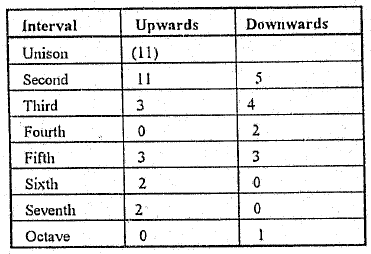
There are 11 repeated pitches (23%), 21 rising intervals (45%) and 15 falling intervals or 32%. Smaller intervals (repeated pitches, seconds and thirds) constitute the overwhelming majority of 34 intervals (72%) while there are only 13 (28%) intervals of a fourth and larger. These figures indicate the composer's sensitive treatment of vocal writing and it draws attention to the use of large intervals as a means of expression or giving musical meaning to the text. Some of these specific setting are summarized below:

The table is also a summary of the most important passages in the poem and it follows therefore that the composer has taken care to set these words in an apt way.
Melodic curve
The melodic curve of the vocal line is represented below. Specific words are indicated to show the relationship between the melodic curve and the meaning:
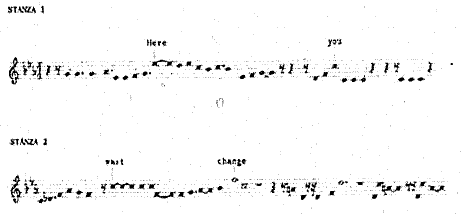
Climaxes
Primary and secondary climaxes are given below:

The second is a true example of a climax where the most important word in the poem takes the highest pitch for a relatively long time-value. The importance of the idea of change from the present state for both man and universe cannot be underestimated in this song, for either poet or composer.
Phrase lengths
Phrase lengths, excluding the first one (b.62-93) are quite short and the performer will have little trouble executing these. In the first phrase it would be advisable to breathe before "Here" (b. 8) since there is a colon in the text and "Here" marks the beginning of the first utterance by the star.
Although the song is clearly tonal, a single key does not dominate for any significant length of time. It would be appropriate to refer to extended tonality here since a variety of loosely related keys are employed to carry the mood through a number of subtle nuances. The opening key has elements of g natural minor and gravitates towards c natural minor by bar 7.
Modulation

The tonal vagueness supports the sense of uncertainty which is prevalent in the underlying meaning of the text. A sense of "change" is achieved very successfully in the piano part from bars 19-23, with the transition from f minor to d minor, ending on a minor chord (the minor dominant of d minor).
Chromaticism/Modal use
Two chromatic passages occur in the bass clef (b. 1-3, 24-26) and are associated with man's "troublesome" destiny in a universe over which he has no command. Because none of the minor keys referred to before contains a raised leading note (or major dominant chord) the song has a vague modal feeling.
HARMONY AND COUNTERPOINT
The harmonic rhythm varies between a four crotchets and two minims per bar. It is slower while the first stanza is sung (b. 6-11) and is quicker with the second stanza (b. 24-25) to enhance the intensified occurrence of the persona's answer. The use of many first and second inversion chords helps to create the tonal vagueness mentioned earlier.
Non-harmonic tones
There are a number of bars which are noticeably unharmonic, namely bars 3-5, 13-15 and 27-29. These bars (all containing parallel material but in different keys) contain rhythmic motif 1 employed melodically in the right hand, fairly arbitrarily against a melodically related ostinato figure in the bass. The initial note of each pattern (E-flat, A-flat and B-flat) is an appoggiatura which suggests a strong effect of "longing" which initially anticipates and later on confirms the textual meaning.
Harmonic devices
Pedal points are used sparingly and only in the bass part of the piano (b. 124-13, 15, 27-28).
Counterpoint
There is some subtle imitation between voice and piano from bars 7-10. The melodic line with the text, "down at me and" (b. 71-2) is echoed one step lower and slightly altered in the treble clef of the piano part in the same bar. The same kind of imitation occurs in bars 94-102 where the words "each in our degree" (b. 84-92) are echoed in the treble clef. Three-part counterpoint is found in a number of bars: 1-2, 114-124, 162-18 and 24-26. These sections with the exception of the middle one are quite chromatic and as a result fairly dissonant, portraying something of the harshness of the realization that man and star come to.
Loudness variation is given in the following summary:
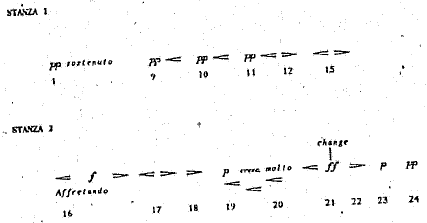
FREQUENCY
There are dynamic indications in 15 of the bars (50%) and 10 of these indictions concentrate around the climax (from b. 16-23). There are no separate indications for the voice, apart from the two portamento accents in bar 27.
RANGE
The lowest level is pp, and occurs in several places to enhance the delicate emotional state of man and star in these uncertain circumstances. The highest is ff which is reserved for the piano part alone (b. 21) and is related to the idea of the expected change or expressing frustration at the elusiveness of this change.
VARIETY
Indications used are:
![]()
There are 22 bars, by implication, at the pp-level (73%), two at f and one at ff. This distribution makes the two louder occasions so much more important. The f (b. 16-18) occurs with the words, "I say: "For all I know, Wait and let Time go by" and is clearly emphasized by the higher dynamic level. The ff has been discussed earlier.
The density varies loosely between two and six parts, including piano and voice. The thickness of the piano part is represented in the following table:
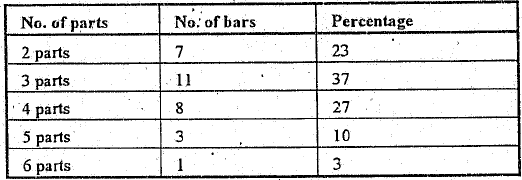
The three- and four-part piano texture dominates while the two-part texture is used for special effect discussed under Counterpoint. The singe bar with a six-part texture coincides with the piano climax of bar 21, also the loudest moment in the song. The idea of the expected change or expressing frustration at the elusiveness of this change, is emphasized. Finally, higher pitched two-part counterpoint is associated with the star while low pitched chromatic movement (b. 24-26) is associated with man.
The irregular structure of the text (extended quatrains) results in a fairly irregular musical structure. The structure can be represented as follows:

The text has been treated in a through-composed manner while the song overall has a clear ternary structure. The return, in an intensified way, to the opening material supports the interpretation of the text stated thus far, namely that the uncertainty and longing for elusive change is experienced by man and nature
7. Mood and atmosphere
A strong sense of "waiting" is suggested in the text and enhanced by the setting through the use of a slow tempo (Lento ![]() , vague tonality and relatively long solo piano sections. A sense of helplessness in affairs of man and of the universe is supported by chromaticism and mild dissonance. Isolation and loneliness are experienced by man and star and this is underlined by the distance between the treble and bass clef parts of the piano (b. 24-26). Both star and man experience an incompleteness and latent potential, reinforced by the strong vocal and pianistic climaxes between bars 19 and 21. Finally, the piano accompaniment suggests the strangeness of the present circumstances in which a star and a man have and intimate conversation on the sensitive subject of their frail existence. This is heard in the high-pitched opening and varied recapitulation (b. 24-25), the tonal vagueness of the descending motif 1 (b. 3-4, 12-15, 26-28) and the almost "accidental" dissonances that occur throughout the song.
, vague tonality and relatively long solo piano sections. A sense of helplessness in affairs of man and of the universe is supported by chromaticism and mild dissonance. Isolation and loneliness are experienced by man and star and this is underlined by the distance between the treble and bass clef parts of the piano (b. 24-26). Both star and man experience an incompleteness and latent potential, reinforced by the strong vocal and pianistic climaxes between bars 19 and 21. Finally, the piano accompaniment suggests the strangeness of the present circumstances in which a star and a man have and intimate conversation on the sensitive subject of their frail existence. This is heard in the high-pitched opening and varied recapitulation (b. 24-25), the tonal vagueness of the descending motif 1 (b. 3-4, 12-15, 26-28) and the almost "accidental" dissonances that occur throughout the song.
General comment on style
The song is an unusual piece of music, tonally vague yet tonal and containing chromaticism - a combination of elements which creates tension. Chords are hardly in root position which reinforces the tonal ambiguity. These and other elements mentioned support the text in which the degree or condition of man and the universe is compared. What is the state of man and the universe? Is it expectantly awaiting change? What the change will be is not stated: it could be death or improvement; final destruction or redemption. It is clear from the setting that Finzi agrees with the sentiments expressed by Hardy: a contemplation of the existential dilemma with and open-ended conclusion.
Unpublished Analysis Excerpts
The following is an analysis of Waiting Both by Curtis Alan Scheib. Dr. Scheib extended permission to post this excerpt from his dissertation on February 17th, 2012. His dissertation dated 1999, is entitled:
Gerald Finzi's Songs For Baritone On Texts By Thomas Hardy: An Historical And Literary Analysis And Its Effect On Their Interpretation
This excerpt begins on page thirty-eight and concludes on page thirty-nine.
Waiting Both |
||
|---|---|---|
| A Star looks down at me, | ||
| And says: 'Here I and you | ||
| Stand, each in our degree: | ||
| What do you mean to do, - | ||
| Mean to do?' | ||
| I say: 'For all I know, | ||
| Wait, and let Time go by, | ||
| Till my change come.' - 'Just so,' | ||
| The star says: 'So mean I: - | ||
| So mean I.' | ||
(Hardy,701) |
||
In the poem, Hardy conveys his philosophy of th epurposeful man pitted against the overwhelming and purposeless forces of nature. The star, as nature, asks of the man what he means to do with his life. The reply is to wait and let time go by until death comes, to which the star replies that indeed it will. Here again are the twin ideas of the inexorable passing of time and the indifference of nature to humankind that both Hardy and Finzi shared.
Finzi uses a chromatic counterpoint, beginning in the upper ranges of the keyboard, to paint the broad expanse of stars at the beginning of his setting. As the star prepares to look down, the lines begin their descent of four octaves, reaching the level of man at the entrance of the vocal line (example 5).

As the voice enters, it is in short phrases, all shaped by the natural declamation of the text (example 6).

There is an avoidance of any strong sense of tonal center throughout, the aimless wandering of the star and of man's fate being painted in the angular vocal lines and the chromatic wanderings of the piano. The opening star figure reappears two more times, once as an interlude between verses and at the end, though this time comeing to rest a step lower than at the beginning. The dynamics are subdued throughout, except for the piano interlude after the "change comes," which makes a sudden crescendo as if to ring the death knell before fading away with equal suddenness. There is a loose ABA form at work here though it seems to evolve out of the emotion of the poem rather than the composer's search for a form to use. This is Finzi at his most characteristic. The vocal line is purely about the words and the piano paints the emotional levels that surround it.
The preceding was an analysis of Waiting Both by Curtis Alan Scheib. Dr. Scheib extended permission to post this excerpt from his dissertation on February 17th, 2012. His dissertation dated 1999, is entitled:
Gerald Finzi's Songs For Baritone On Texts By Thomas Hardy: An Historical And Literary Analysis And Its Effect On Their Interpretation
The excerpt began on page thirty-eight and concluded on page thirty-nine.

